Common Invasive Plants Every Master Gardener Should Know
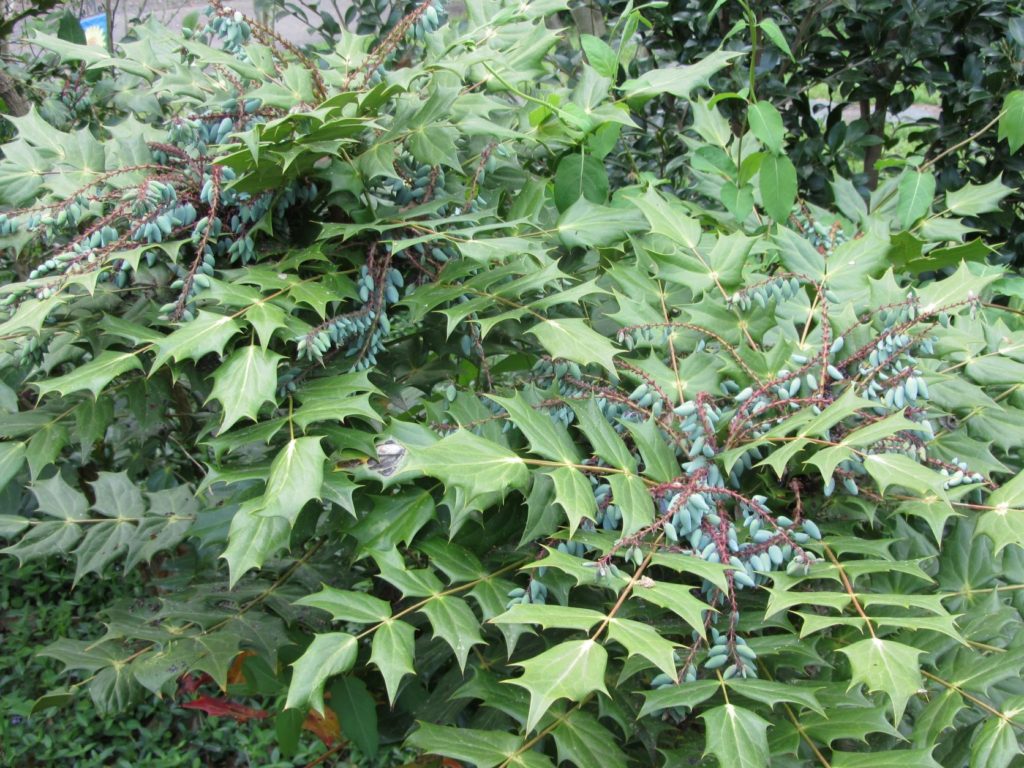
Leatherleaf Mahonia drupes follow showy yellow winter flowers. These are edible and support wildlife. This common Asian shrub has been recently added to Virginia’s invasive species list.
The question of invasive plants is an interesting one, in part because the list keeps growing. Some of the plants on this list may surprise you because they are so commonly found in our local yards and landscapes. A few plants have just been added to the list over the past year. While some, like stilt grass are noxious weeds, many of these ornamental plants are still available in the nursery trade. Several are beloved by local butterflies and birds. These are all considered invasive now in Coastal Virginia because of how they spread outside of cultivation.
The issue of ‘invasive’ vs. imported vs. native plants may come up in conversations during Master Gardener project home visits. Although several native tree and perennial species also spread aggressively, whether by rhizomes or seed dispersal, native plants are never termed invasive.
There are several additional grasses and aquatic plants on the list at the link below that aren’t included in this more general list.
Invasive Plant Species of Virginia DCR
VA Invasive Plant Species List September 2024
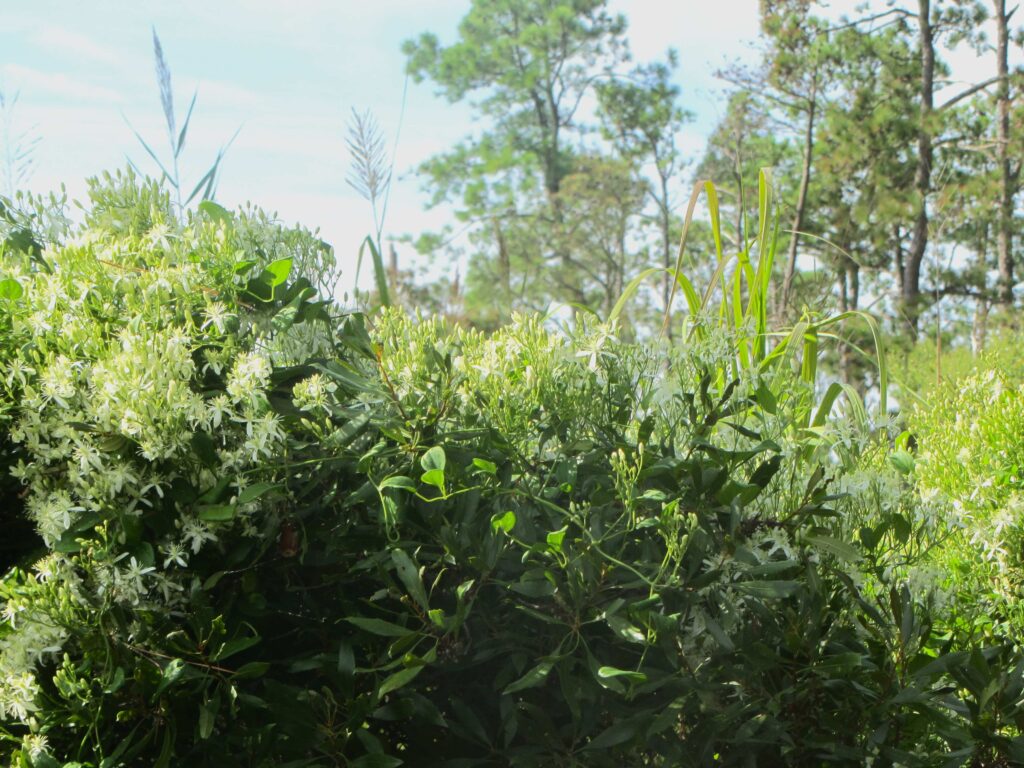
Sweet autumn Clematis, an Asian vine, clambers over a Myrica shrub at Black Point on Jamestown Island. This Clematis species out competes our native C. virginiana.
Vines
Celastrus orbiculatus, Oriental Bittersweet
Clematis terniflora, Sweet Autumn Clematis
Hedera helix, English Ivy
Lysimachia nummularia, Creeping Jenny, Moneywort
Lonicera japonica, Japanese Honeysuckle
Lonicera spp. (some species are native and not considered invasive)
Pueraria montana var. lobata, Kudzu
Vinca minor, Periwinkle
Wisteria floribunda, Japanese Wisteria
Wisteria sinensis, Chinese Wisteria

An Eastern Tiger Swallowtail nectars on butterfly bush, Buddleia davidii. Look for sterile cultivars that won’t drop seeds if you want to include it in a butterfly garden.
Shrubs
Berberis (formerly Mahonia) bealei, leatherleaf mahonia
Berberis thunbergii, Japanese barberry
Buddleja davidii, Butterfly-Bush
Elaeagnus umbellata, Autumn Olive
Euonymus alatus, Burning Bush, Winged Euonymus
Ligustrum spp., Privet
Nandina domestica, Heavenly Bamboo
Rosa multiflora, Multiflora Rose
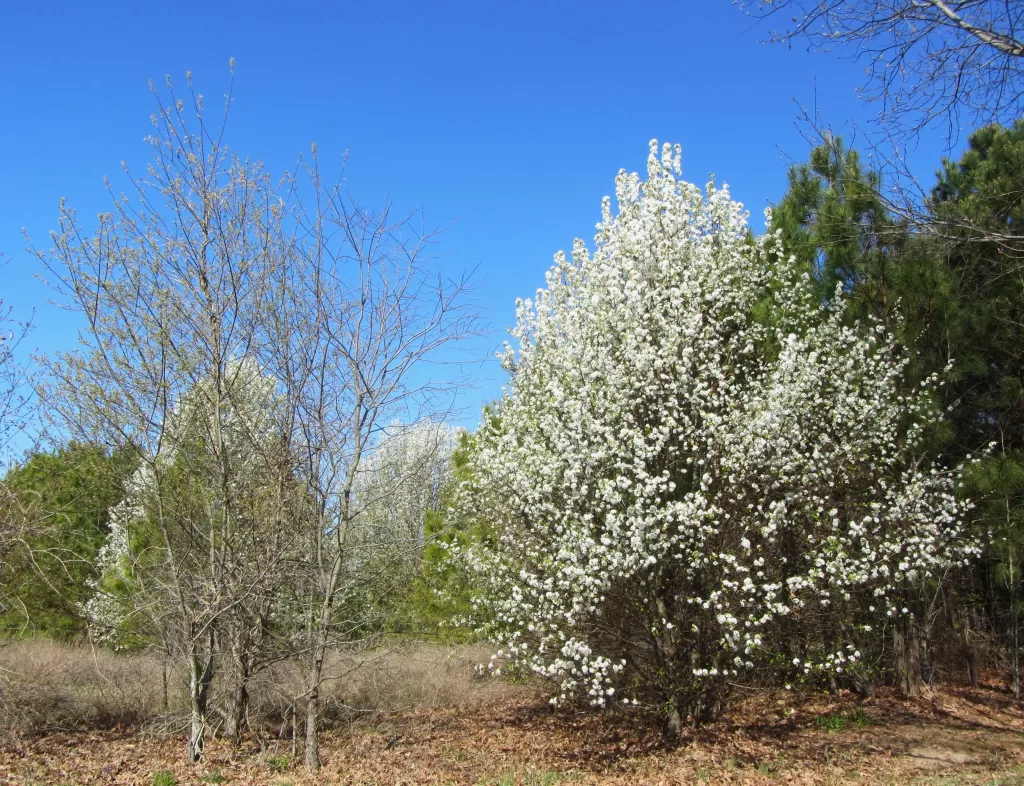
Callery pear, once a desirable ornamental tree used in residential landscaping, has escaped cultivation and out competes native species. Many animals eat its fruits, spreading its seeds.
Trees
Acer platanoides, Norway maple
Ailanthus altissima, Chinese Tree of Heaven
Albizia julibrissin, Mimosa
Paulownia tomentosa, Royal Paulowina, Empress Tree
Populus alba, Silver Poplar
Pyrus calleryana, Callery Pear
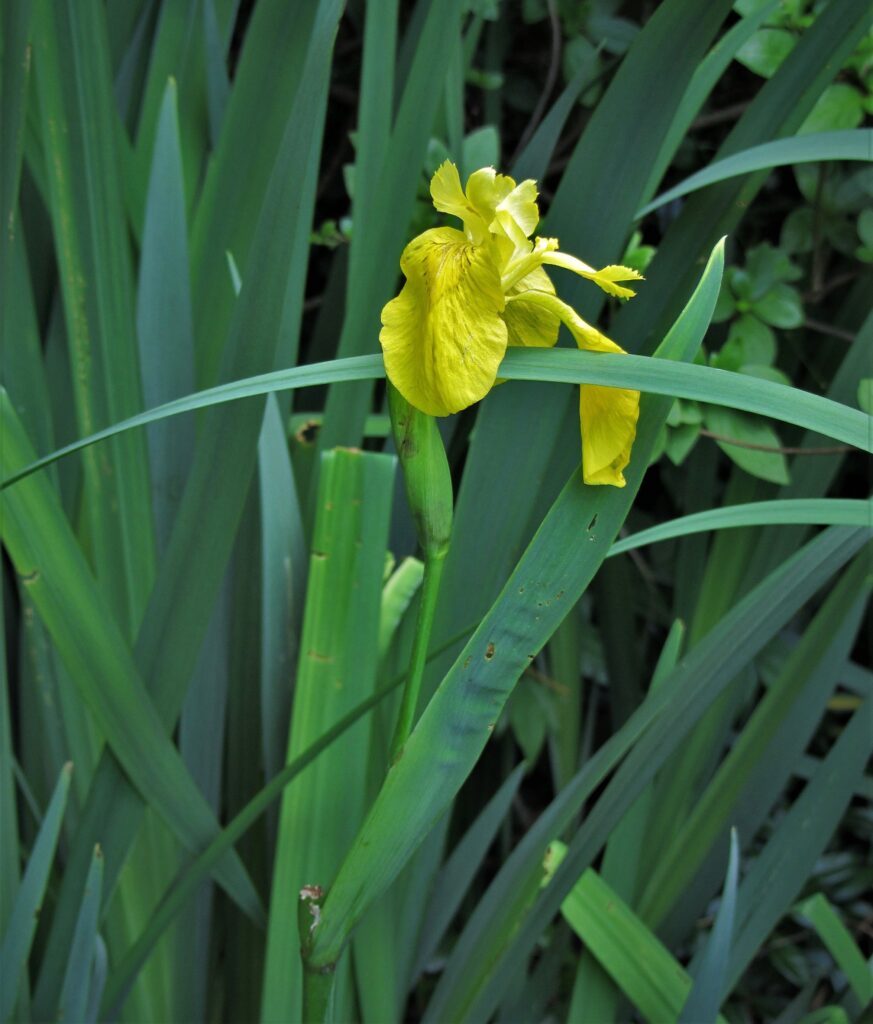
Yellow Flag Iris, considered invasive, has naturalized in our area. It blooms in wetlands in early May.
Perennials/Grasses
Arum italicum, Italian Arum
Cenchrus spp., Fountain Grass
Iris pseudacorus, Yellow Flag Iris
Lythrum salicaria, Purple Loosestrife
Microstegium vimineum, Japanese Stilt Grass
Miscanthus sinensis, Chinese Silvergrass
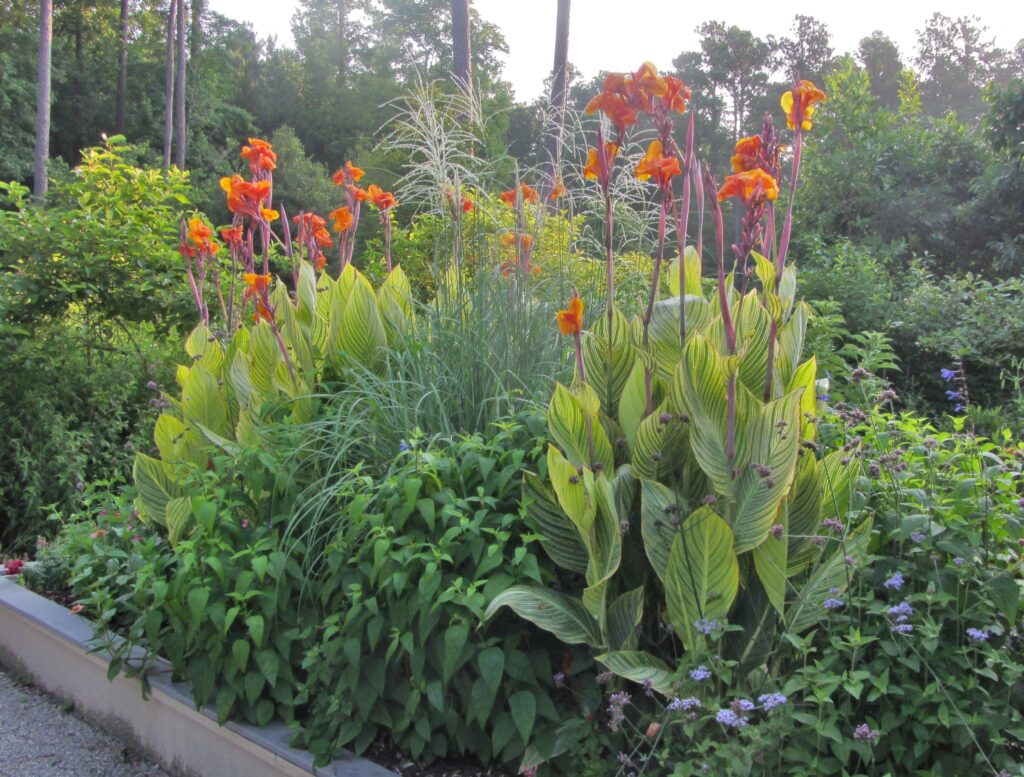
Miscanthus grass blooms in the center of this bed at the Williamsburg Botanical Garden and Freedom Park Arboretum. It has since been removed.
All photos by E. L. McCoy
Replacing Your Invasive Plants with Natives
A History of Our War with Plants
Noxious or Nice?
Summer Flowering Shrubs and Trees for Pollinators
The Beauty and Promise of Trees in Winter
Identifying Local Trees in Winter
Books
Orion, Tao.
Pearce, Fred.
Stewart, Amy. Random House
